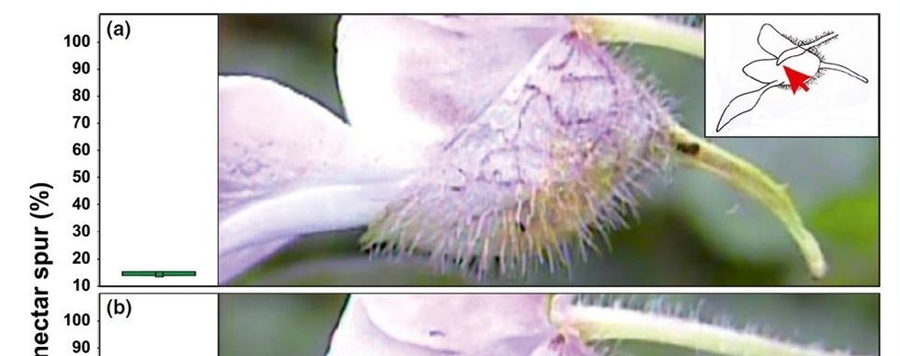
Nectar spur and short-proboscid pollinators
Since the time of Darwin, biologists have considered the floral nectar spur to be an adaptation representing a high degree of plant specialization. Nevertheless, some researchers suggest that nature is more complex and that even morphologically specialized plants attract a wide spectrum of visitors.
We observed visitors on Impatiens burtonii (Balsaminaceae) and measured the depth of the proboscis insertion into the spur, the distance of the nectar surface from the spur entrance and the visitor’s effectiveness.
The hoverfly Melanostoma sp., with the shortest proboscis, was most active early in the morning and fed on pollen and nectar near the spur entrance. The honeybee Apis mellifera and the hoverfly Rhingia mecyana were the most frequent visitors before and after noon, respectively. Although R. mecyana, the only visitor able to reach the end of the spur, was the most frequent, it did not deposit the largest number of pollen grains per visit.
Nectar spurs may function as complex structures allowing pollination by both short- and long-proboscid visitors and separating their spatial and temporal niches. Spurred plants should be considered as more generalized and exposed to more diverse selection pressures than previously believed.






